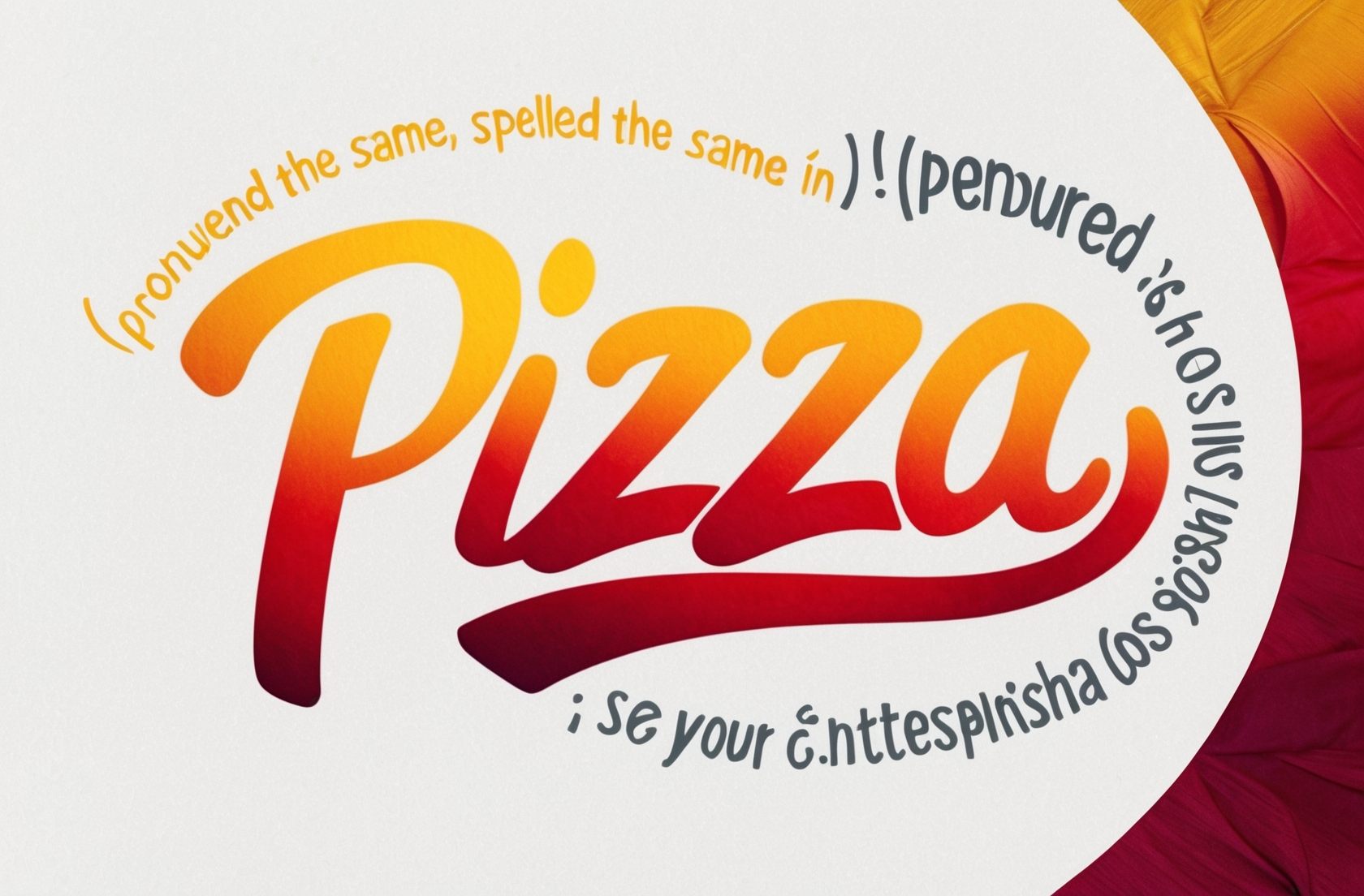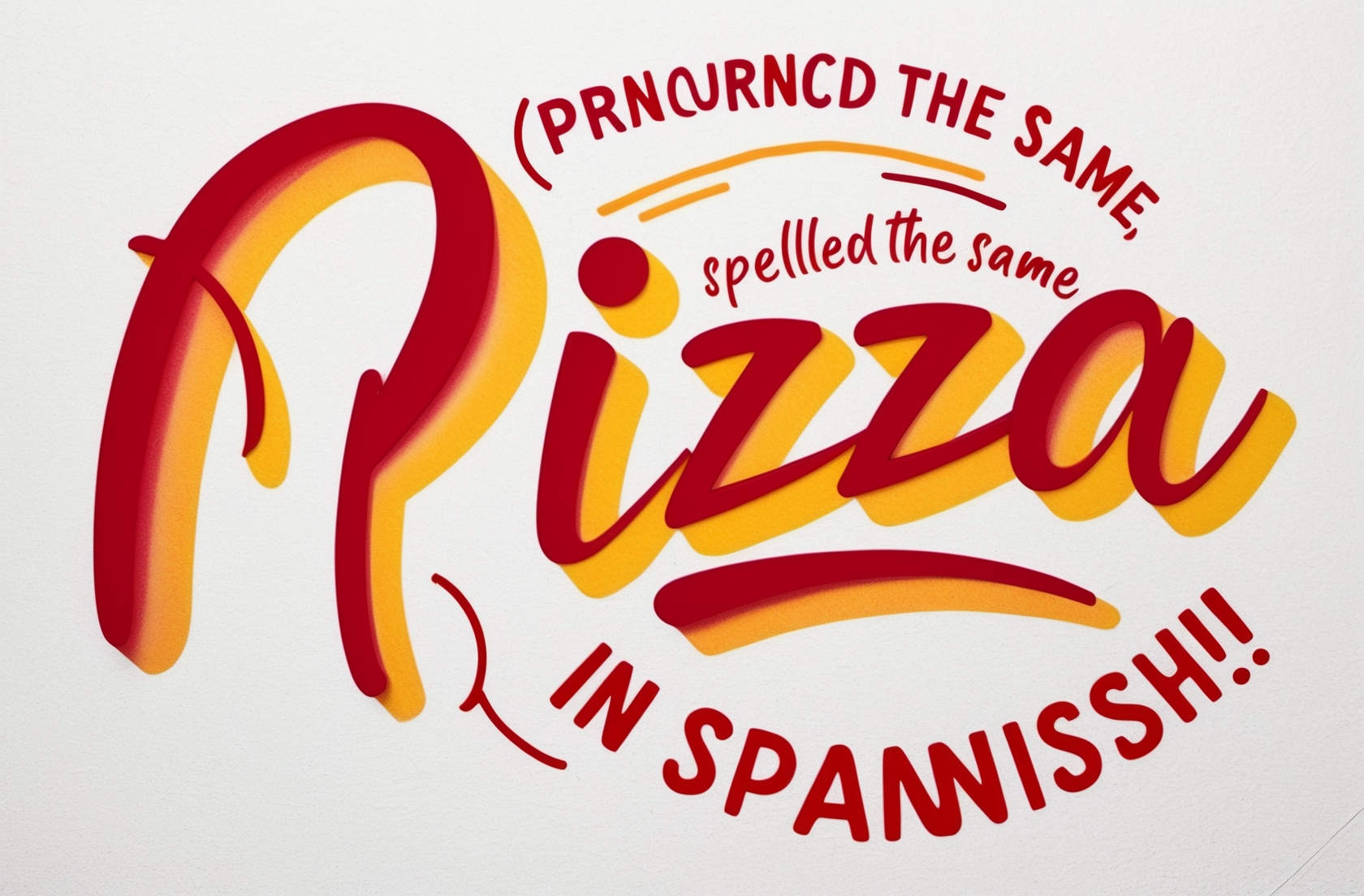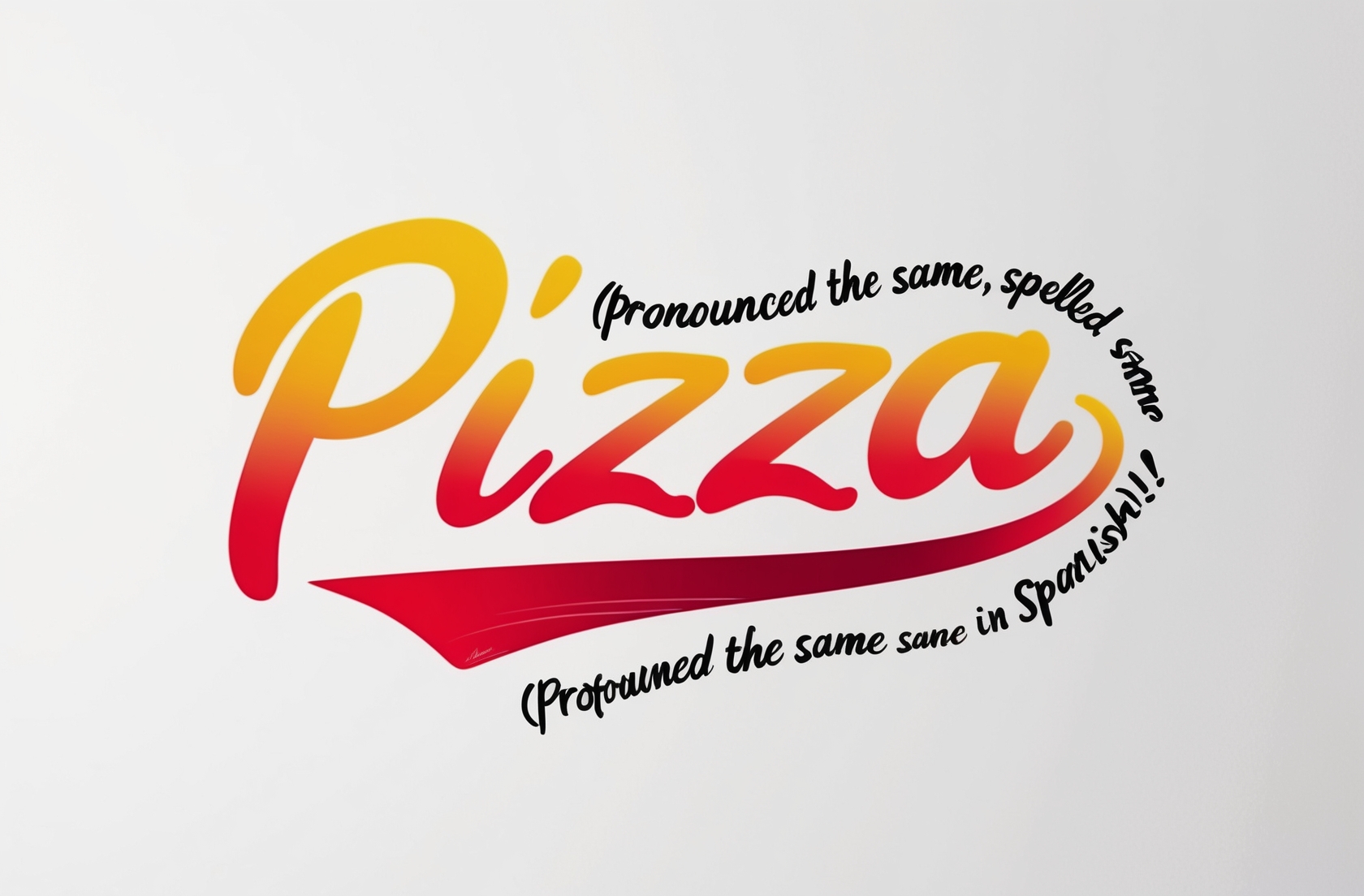How To Say Pizza In Spanish

Discover how to say pizza in Spanish and master its pronunciation! Get the perfect translation of pizza in Spanish, plus tips for making your own delicious pizza at home!
How To Say Pizza In Spanish: The Complete Guide
When it comes to one of the world’s most delicious dishes, pizza is a universal term recognized by many. However, if you find yourself in a Spanish-speaking country or simply wish to enhance your language skills, you might ask, "How to say pizza in Spanish?" This article will not only answer that question but will also delve into the pronunciation, cultural significance, and various ways to enjoy pizza in Spanish-speaking countries.
Understanding the Basics: How To Say Pizza In Spanish
The simplest way to say pizza in Spanish is, unsurprisingly, "pizza." The word remains the same across languages. However, it is important to note how to pronounce it correctly for fluency and clarity in conversation.
Pronunciation: How To Pronounce Pizza In Spanish
To pronounce "pizza" in Spanish, follow these guidelines:
- Phonetic: [pee-tsah]
The Spanish pronunciation softens the "z" into a "ts," similar to the Italian pronunciation. To break it down further:
- Start with "pi" – like in the English word “peach.”
- Follow with "zza," where the "zz" sounds almost like a soft "ts" followed by a quick "ah."
By practicing this pronunciation, you can confidently order pizza while traveling in a Spanish-speaking country.
The Translation of Pizza in Spanish
While "pizza" may seem straightforward, understanding its broader culinary context in Spanish-speaking countries can enrich your dining experiences. Various regions have their unique twists on pizza:
Regional Variations
Mexico: In Mexico, pizzas are often adorned with local ingredients like jalapeños, chorizo, and even tinga (a spicy meat). Often, you will see “pizza” accompanied by a word to describe the toppings, such as “pizza de pollo” (chicken pizza).
Spain: Spanish pizzas might include toppings such as jamón (ham), aceitunas (olives), and huevo (egg). You may encounter pizza names like “pizza de jamón y aceitunas.”
Argentina: Argentinean pizza may feature a thicker crust and be topped with provolone cheese, or it can be cooked in a "fugazzetta" style, filled with onions and cheese.
Understanding the nuanced usage of "pizza" helps in appreciating the diverse culinary landscape across different Spanish-speaking countries.
Why Pizza is a Global Favorite
Pizza’s allure goes beyond its flavor. The versatility of toppings, the communal experience of sharing a pie, and its adaptability to local preferences make it an essential dish worldwide. In Spanish-speaking countries, pizza has integrated into the food culture, reflecting local tastes and preferences.
The Cultural Significance of Pizza in Spanish-Speaking Areas
In many cultures, food serves as a bonding experience, and pizza is synonymous with gatherings—whether it's a casual family dinner, a party with friends, or a date night. Understanding how to refer to pizza in Spanish opens up opportunities for connection.
Exploring Pizza Variants in Spanish Cuisine
Unique Spanish Pizza Recipes
If you're curious about how pizza is interpreted in Spanish cuisine, consider trying some adaptations. Here are a few notable variations:
- Spanish Tortilla Pizza: A twist on traditional pizza, this dish uses a tortilla base. It's popular in Spain and can be topped with various ingredients.
- Pizza con Queso de Cabra: Pizza topped with goat cheese, a nod to Spain’s rich cheese-making tradition.
- Pizza de Atún: Tuna pizza, frequently seen in both Latin America and Spain, showcases local preferences.
To explore different pizza recipes, take a look at these related links:
Italian vs. Spanish Pizza: A Comparison
While discussing "How to say pizza in Spanish" it's vital to compare how pizza is handled in Italy versus Spain. Italian pizza is primarily known for its use of thin crust, while Spanish pizzas may lean towards thicker bases.
Italian pizzas prioritize simplicity, typically topped with fresh ingredients like basil, mozzarella, and tomatoes. In contrast, Spanish pizzas are often loaded with a variety of toppings reflecting the region's diverse culinary influences.
The Role of Cheese in Pizza
One of the most significant differences between Italian and Spanish pizza is the cheese used. In Spain, cheeses like Manchego or Iberico might be favored over mozzarella, offering unique flavor profiles.
How to Order Pizza in Spanish
If you're ever in a Spanish-speaking country and want to order pizza, knowing some key phrases can be beneficial:
- "Quisiera pedir una pizza" – "I would like to order a pizza."
- "¿Cuáles son los ingredientes?" – "What are the ingredients?"
- "¿Puedo agregar más ingredientes?" – "Can I add more toppings?"
Using these phrases will not only make your dining experience smoother but also enrich your interaction with locals.
Pizza and Health: A Discussion
While pizza is often seen as a guilty pleasure, it can be nutritious if made thoughtfully. Using whole-grain crusts, fresh vegetables, and lean protein can transform pizza into a healthy meal.
Nutritional Perspective
According to the American Heart Association, moderation is key in enjoying foods like pizza. Homemade pizzas offer the chance to control the ingredients and portions, creating a balanced meal that includes healthy fats, proteins, and carbohydrates.
Pizza as a Social Connector
Sharing a pizza can lead to memorable moments with friends and family, fostering connections that are culturally significant in various societies. Whether it's a casual hangout or a festive gathering, pizza serves as a vehicle for bringing people together.
Encouraging New Experiences
Next time you're out with friends or family, think of how pizza can enhance your social experience. You might want to try out unique kinds of pizza by exploring options like BBQ Chicken Pizza or a refreshing Strawberry Cheesecake Pizza.
Conclusion: Expanding Your Culinary Horizons
Learning "How to say pizza in Spanish" is just the beginning of a richer culinary journey. By exploring various forms of pizza and practicing how to enjoy them in social settings, you enrich not only your vocabulary but also your cultural experiences.
Call to Action
Now that you’re equipped with the knowledge of how to say pizza in Spanish, we encourage you to explore the world of pizza further. Try out different recipes from the links provided, challenge yourself to pronounce names correctly, and don’t forget to share your experience on social media! Invite your friends over for a pizza night, and let them in on the fun of saying pizza in Spanish.
Feel free to leave comments on your favorite pizza toppings or your thoughts about this article. Happy eating and learning!
Incorporating these facets will not only improve your understanding of the language but also connect you with a community of pizza lovers everywhere.

Certainly! Here are 10 frequently asked questions (FAQ) along with detailed answers related to the recipe article titled "How To Say Pizza In Spanish."
1. What is the translation of "pizza" in Spanish?
The translation of "pizza" in Spanish is simply "pizza." The word is the same in both languages, which makes it easy to remember.
2. How do you pronounce pizza in Spanish?
To pronounce "pizza" in Spanish, you would say it as "pee-tsah." The "z" is pronounced softly, similar to a "s" in English.
3. Can I use a gluten-free crust for this pizza recipe?
Yes, you can substitute a gluten-free crust in this recipe. Many grocery stores offer pre-made gluten-free pizza crusts, or you can make your own using gluten-free flour blends.
4. What are some common ingredient substitutions for pizza?
If you don’t have mozzarella cheese, you can try using gouda or provolone. For the sauce, any tomato-based sauce will work, such as marinara or spaghetti sauce. You can also experiment with various toppings like vegetables, meats, or even non-dairy options for a vegan pizza.
5. How long does it take to cook the pizza?
Typically, cooking a pizza takes about 12-15 minutes in a preheated oven at 475°F (245°C). For a crispier crust, consider baking it a few minutes longer, but keep an eye on the cheese to ensure it doesn’t burn.
6. How should I store leftover pizza?
Store leftover pizza in an airtight container in the refrigerator for up to 3-4 days. For longer storage, you can freeze the pizza by wrapping it tightly in plastic wrap and then placing it in a freezer-safe bag. Frozen pizza can last up to 2-3 months.
7. What are some dietary modifications for pizza?
For a healthier option, consider using whole wheat or cauliflower crusts, low-fat cheese, and plenty of vegetables as toppings. You can also make a vegan version by using vegan cheese and a plant-based crust.
8. What side dishes pair well with pizza?
Side dishes that complement pizza include salads, garlic bread, or roasted vegetables. A fresh arugula salad with lemon vinaigrette enhances the flavors of the pizza while keeping the meal light.
9. Can this pizza recipe be adapted for a crowd?
Absolutely! You can double or triple the ingredients to make multiple pizzas at once. If you're serving a large group, consider making assorted mini pizzas with different toppings so everyone can find something they enjoy.
10. What are some fun ways to serve pizza?
You can serve pizza slices in a casual and fun way by cutting them into smaller squares, making it shareable for parties. Consider setting up a pizza bar with various toppings, allowing guests to customize their slices.
These FAQs should help address common concerns and enhance the experience of making pizza, while also incorporating the keywords related to the article.

How To Say Pizza In Spanish: A Flavorful Guide
Pizza is one of the most beloved dishes around the world, but did you know it’s just as celebrated in Spanish-speaking countries? Whether you’re traveling through Spain or simply trying to enhance your culinary vocabulary, knowing "How To Say Pizza In Spanish" is a great skill to have. Let’s dive into this culinary adventure and learn the simple translation, pronunciation tips, and some exciting variations of pizza you can try at home!
The Translation of Pizza in Spanish
The word for pizza in Spanish is simply "pizza." That’s right! Pronounced as it is in English, even though it is written in the same way, its unique pronunciation adds a flavorful twist!
When discussing how to pronounce pizza in Spanish, you would want to say it like this:
- IPA notation: /ˈpitsə/
- Phonetic spelling: "PEE-tza"
This demonstrates how the “z” has a soft sound in this context, similar to that of “s.”
How To Pronounce Pizza In Spanish
To pronounce "pizza" correctly in Spanish, follow these tips:
- Break it down:
- Say "pee" with a long "e" sound.
- Follow it up with "tza," where the "tz" sounds close to “ts.”
- Practice: Try saying it in a sentence: “Me gusta la pizza,” which means “I like pizza.”
Regional Variations
Interestingly, the enjoyment of pizza is not just about saying it right. Across different Spanish-speaking regions, you might encounter various styles and toppings. Here are some delicious examples you can explore:
- Mediterranean-Style Pizza: Often adorned with olives, tomatoes, and feta cheese.
- Mexican Pizza: Featuring ingredients like jalapeños, chorizo, or even guacamole!
- Cuban Pizza: A creative twist combining traditional Cuban flavors.
For those interested in trying out unique pizza recipes, here are some delightful ideas you can check out:
- Spinach and Artichoke Pizza: A veggie delight that packs flavor.
- Bacon, Egg, and Cheese Pizza Bagel: A breakfast revolution!
- BBQ Chicken Pizza: Combining both sweet and savory elements.
Why You Should Try Pizza
Aside from its global popularity, pizza holds a special place in many hearts. It’s versatile, shareable, and can accommodate a wide variety of tastes. With endless toppings and crust options, there's something for everyone!
Nutritional Insights: A Closer Look
While pizza can sometimes get a bad rap, understanding its nutritional value can help you make smarter choices. Let's explore the nutrition associated with a classic pizza made with standard ingredients in a typical serving.
Homemade Pizza Nutrition Table
| Nutrient | Amount per serving | % Daily Value (2,000 Cal) |
|---|---|---|
| Calories | 285 | 14% |
| Protein | 12g | 24% |
| Total Fat | 10g | 15% |
| Saturated Fat | 3.5g | 18% |
| Unsaturated Fat | 5g | – |
| Trans Fat | 0g | – |
| Carbohydrates | 36g | 12% |
| Dietary Fiber | 2g | 8% |
| Sugars | 2g | – |
| Calcium | 200mg | 20% |
| Iron | 1.5mg | 8% |
| Vitamin A | 500IU | 10% |
| Vitamin C | 2.5mg | 4% |
Summary of Nutritional Features
Pizza can be a balanced meal when made with fresh ingredients. It provides protein from toppings like cheese and chicken, healthy fats, carbs for energy, and is enriched with vitamins and minerals from veggies. Choosing whole grain crust, less cheese, and loading up on vegetables can make your pizza a nutrient-dense option.
For more detailed information about healthy eating habits, you can refer to the Centers for Disease Control and Prevention or check out MyPlate.gov for personalized dietary guidelines.
In Conclusion: Pizza Is for Everyone!
Now you know how to say pizza in Spanish, how to pronounce pizza in Spanish, and even the translation—it’s all about “pizza.” So, whether you're planning a dinner night or a fun get-together, make sure to incorporate this dish into your culinary repertoire.
What are you waiting for? Try making your own delicious pizza at home! Experiment with toppings, share your creations on social media, or leave a comment below about your unique pizza experiences. Don’t forget to link back to this article for your friends so they can learn how to say pizza in Spanish too!
Call to Action!
Dive into the flavors of pizza today and let us know your thoughts! Cook up a storm, snap a picture, and tag us in your social media posts. Explore more inspiring pizza recipes like four cheese pizza sandwich or a zesty taco pizza sandwich. Happy cooking!

Certainly! Here are some practical tips and health considerations related to learning how to say "pizza" in Spanish, as well as enjoying pizza in a healthy way.
How to Say "Pizza" in Spanish
Translation: The word for pizza in Spanish is simply "pizza." It's pronounced similarly, although with a slightly different accent depending on the region. In Spain, it is pronounced [ˈpisa], while other Spanish-speaking countries might have a similar pronunciation without much variation.
Use in Context: Practice using the word in sentences to help remember it. For example:
- "Me gustaría pedir una pizza." (I would like to order a pizza.)
- "¿Qué tipo de pizza prefieres?" (What type of pizza do you prefer?)
Audio Tools: Use language learning apps or online dictionaries that include audio pronunciation to hear how native speakers say the word.
- Practice with Others: Engage in conversation with speakers of Spanish. You could join language exchange meetups or use online platforms to practice.
Practical Tips for Enjoying Pizza Healthy
Choose Whole Grain Crust: Opt for whole-grain or cauliflower crust to increase fiber content and reduce refined carbs.
Load Up on Veggies: Include a variety of vegetables as toppings. This adds nutrients and fiber, making the pizza healthier.
Watch Portion Size: Be mindful of the number of slices you consume. A typical serving may be 1-2 slices depending on the size.
Moderate Cheese: Asking for less cheese or substituting mozzarella with lower-fat cheese can help balance calorie intake.
Lean Proteins: Choose toppings such as grilled chicken or turkey instead of processed meats like pepperoni or sausage, which tend to be higher in fat and sodium.
Homemade Pizza: Consider making pizza at home so you can control the ingredients. Use fresh ingredients and limit added sugars and preservatives.
Health Considerations
Allergies and Intolerances: Be aware of any allergies (e.g., gluten or dairy) when ordering or preparing pizza. There are gluten-free crusts and dairy-free cheese options available.
Balance and Moderation: While pizza can be enjoyed as part of a balanced diet, moderation is key, especially if it’s high in carbs and fats.
Hydration: Drink plenty of water while enjoying pizza, especially if it is high in sodium. This helps balance out salt intake.
- Nutrient Timing: Consider pairing pizza with a salad or soup to increase the overall nutrient profile of your meal.
In summary, the word for pizza in Spanish remains "pizza," and by following practical tips on preparation and consumption, you can enjoy this delicious dish while maintaining a healthy diet!